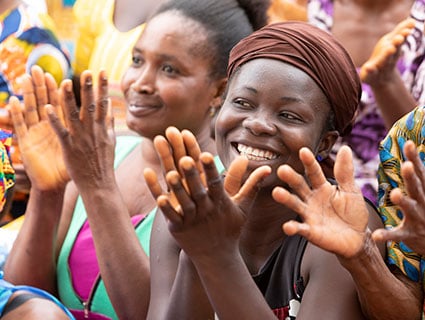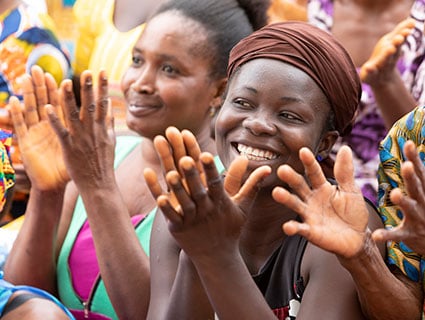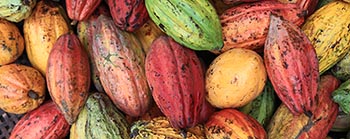GPS Mapping
Improving transparency on the ground
October 16, 2017
To help farmers increase yields on their farms, we need to understand exactly what is happening on their farm in order to be able to provide the right training, support and inputs.
In recent years, we have used GPS mapping technology to transform our understanding of individual farmer needs. It is providing us with more detailed information than ever before about the farmers we work with, including the location, size, and footprint of their farms, the type and age of trees grown, the cultivation methods used, choices made about fertilizers, replanting activities, the use or not of shade trees, along with a wealth of information about farming families and communities. This data provides invaluable insight on the specific challenges that farms face which can be used to offer bespoke support to improve productivity through targeted farm development plans, training and other inputs. It also helps to increase the overall transparency of the cocoa supply chain by enabling us to trace certified beans back to the farm and provide detailed information on how they were grown.
GPS mapping of smallholder cocoa farmers is not an easy task. Farms can be remotely located at long distances from each other and the weather can have a negative influence on local road conditions and GPS signals.
We began our GPS mapping program in Côte d’Ivoire in 2015, where our aim is to map every farmer we source from. So far, we have now mapped 50,100 farms, 63% of the total, as well as 321 infrastructures such as schools, boreholes, health clinics and cocoa warehouses. Our objective for 2017/18 is to take the proportion of farmers mapped up to 88%.
In 2016, we expanded our program beyond Côte d’Ivoire, mapping 6,000 farms in Indonesia and hundreds in Cameroon. In 2017/18, we will focus on expanding our mapping program recently introduced in Brazil and Cameroon.
Highlights
56,000 farms mapped using GPS mapping, including 6,000 in Indonesia and the rest in Côte d’Ivoire.
Looking ahead
We will double the number of farms mapped using GPS technology to 100,000 globally across Côte d'Ivoire, Ghana, Cameroon, Brazil and Indonesia by 2020.
| Country | 2016 | 2017 | 2018 | 2019 | 2020-2021 |
|---|---|---|---|---|---|
| Cote d'Ivoire | 40.000 | 70.000 | 80.000 | 88.000 | |
| Cameroon | 500 | 8.982 | 14.909 | 24.307 | 35.000 |
| Ghana | - | 5.000 | 10.000 | 15.000 | 20.000 |
| Brazil | 10 | 77 | 236 | 477 | 800 |
| Indonesia | 5.833 | 10.133 | 13.333 | 14.333 | 14.333 |



